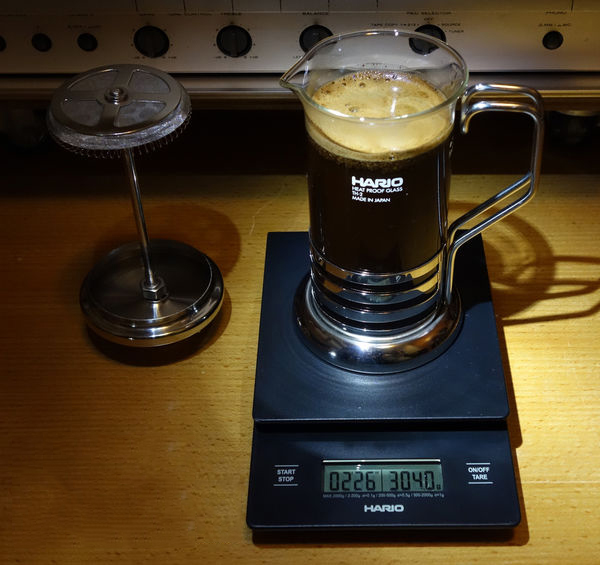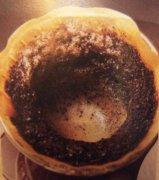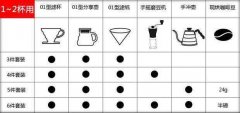What is the difference between hand-brewed coffee and French presser in the way of extraction?

Professional coffee knowledge exchange more coffee bean information please follow the coffee workshop (Wechat official account cafe_style)
Seven factors affecting hand-brewed coffee
In fact, generally speaking, the way coffee is made is basically divided into extraction methods: (water) soaking or filtration.
Legal pressure belongs to the former. Hand flushing belongs to the latter.
The advantage of legal pressure is simple, a certain thickness of powder, a certain temperature of water, a certain amount of time, the coffee made is about the same. It feels full and heavy as a whole. But the problem is that the taste is generally not pure and clean enough.
The way of soaking greatly increases the contact time between water and coffee powder, extracts more substances, and is bound to make the extraction process uncontrollable. Some powders are over-extracted and some are not enough, you say rich, do not rule out the full flavor of the coffee itself, but it is also likely to be related to this "not pure enough". Not clean enough, of course, including the powder filter is not clean, but also includes the aforementioned taste is not pure.
Hand brewing requires more elaborate operation in order to understand the aroma of coffee powder at each stage, and the reward is that the coffee is clearer and mellow both in sight and taste. And it is often layered fragrance. It's like the front and back of perfume. Of course, the premise is that you should master the correct way of hand flushing and practice a lot. Because the fineness of hand flushing lies in that there are some fine-tuning techniques for the degree of extraction in a certain operation process to ensure the integrity and appropriateness of the extraction.
Feel that the thin hand may be due to the lack of extraction, coupled with the strong acid mentioned in the problem description, the water temperature is probably not enough (try about 92 degrees), and adjust the thickness of the powder a little bit. The variety of coffee beans is also related. I have not come into contact with Yunnan beans in recent years, but many Yunnan beans are sour. It also has something to do with this, and the degree of baking.
In a nutshell, it goes on and on.
1. First of all, let's make up for the knowledge of taste: people feel sour taste much more than sweetness. When sour and sweet taste are condensed together, sour taste will be much greater than sweetness in taste buds. That is to say, when your coffee gouache ratio is relatively low, people's taste buds will feel more sour.
two。 In the extraction stage of coffee, first salty, then sour, and finally sweet, because the size of the molecules is different, when in contact with water, the salt will dissolve first, then to acid, and finally to macromolecular sugars; this explains why the subject feels very sour after 2 minutes and 15 seconds, because it only reaches the sour stage, and the sweetness is not enough to reach a balance with the sour. Moreover, Yunnan actually has a sour taste, and I don't know how the baking degree is. It is estimated that the one you bought belongs to relatively moderate baking, so it will be slightly sour. Considering the above reasons, it is normal that the coffee of the subject is very sour!
PS: in most cases in China, making coffee by hand for about 2 minutes is the most sour time, so of course you will feel sour when you drink it. If you want to be less sour, then take a little longer, so the coffee will be sweeter! The advantage of hand flushing is that it can better control the taste, rather than rinsing every bean for 2 minutes and 15 seconds and then judging whether it is good or bad!
Extend it a little bit: since the coffee is sour in about 2 minutes, this method is more suitable for coffee that is not sour, and it is appropriate to bake it deep in it; as for coffee with high acidity, you don't like sour coffee in the first place, so don't use the method of strengthening the sour taste to make it. For a long time, it won't be so sour!
Because of the above reasons, many baristas rush in this way, resulting in relatively small room for roasters to play, and they have to roast more deeply in order to match this method; it is so easy to fall into a cycle, and the barista flushes very sour and tells the baker that the baking degree of the beans should be adjusted, and the bakers will adjust the roasting degree, and eventually become coffee beans that everyone is used to drinking deeper. But coffee beans are often the sweetest when they are shallow baked, and if you don't find a way to give full play to the sweetness, it will be difficult to break away from the above cycle; if you try more hand flushing around sweetness, you will find that hand flushing is much more interesting than other cooking utensils, rather than simple sour taste. The industry thinks that customers can't accept sour taste, which is one of the reasons why it is difficult to promote coffee. I don't think it's advisable, because even though coffee beans, as raw materials, largely determine the taste of coffee, the plasticity of hand brewing is also very high. if the flavor and taste are well controlled, customers can drink this coffee as soon as they drink it, and it has a very natural sour taste. Many people will probably be attracted to the coffee. At least I have been trying to make a considerable number of customers directly drink a cup of coffee and then sigh: this coffee is so sweet!
So the core of making coffee is sweetness, or to regulate the balance between sour, sweet and salty flavors! In fact, the purpose is to give yourself a different experience in the taste buds. When you drink coffee with high sweetness one day, I think you will understand!
3. The method pressure belongs to the immersion extraction, which is similar to the cup test, which is relatively stable, and the extracted things can better reflect the original taste of coffee. As long as it reaches a certain time, the pressure will actually be saturated, the extraction is almost done, and the substance dissolved in the water tends to be stable, so you will find the pressure easy to manipulate, even a bit of a fool!
.
Important Notice :
前街咖啡 FrontStreet Coffee has moved to new addredd:
FrontStreet Coffee Address: 315,Donghua East Road,GuangZhou
Tel:020 38364473
- Prev

The shape of the powder wall of V60 hand brewed coffee what is the ideal shape of the coffee powder wall
Professional coffee knowledge exchange more coffee bean information please follow the coffee workshop (Wechat official account cafe_style) the seven factors affecting hand-brewed coffee beginners can pursue the leveling of the entire powder layer to maintain a flat state, uniform extraction can be. There are many schools of hand rush, and there is no fixed standard. And when you get started, you always see a lot of different brewing methods, so don't get into it.
- Next

Introduction to hand-brewed coffee recommended what accessories or equipment do you need to get started with hand-made coffee?
Professional coffee knowledge exchange more coffee bean information please pay attention to the coffee workshop (Wechat official account cafe_style) the seven factors that affect hand-brewed coffee. The first thing that newcomers come into contact with is the utensils. On the contrary, coffee beans actually bought some utensils before they began to feel a little bit. So let's first talk about the selection and purchase of appliances. Hand-washed utensils
Related
- Beginners will see the "Coffee pull flower" guide!
- What is the difference between ice blog purified milk and ordinary milk coffee?
- Why is the Philippines the largest producer of crops in Liberia?
- For coffee extraction, should the fine powder be retained?
- How does extracted espresso fill pressed powder? How much strength does it take to press the powder?
- How to make jasmine cold extract coffee? Is the jasmine + latte good?
- Will this little toy really make the coffee taste better? How does Lily Drip affect coffee extraction?
- Will the action of slapping the filter cup also affect coffee extraction?
- What's the difference between powder-to-water ratio and powder-to-liquid ratio?
- What is the Ethiopian local species? What does it have to do with Heirloom native species?

